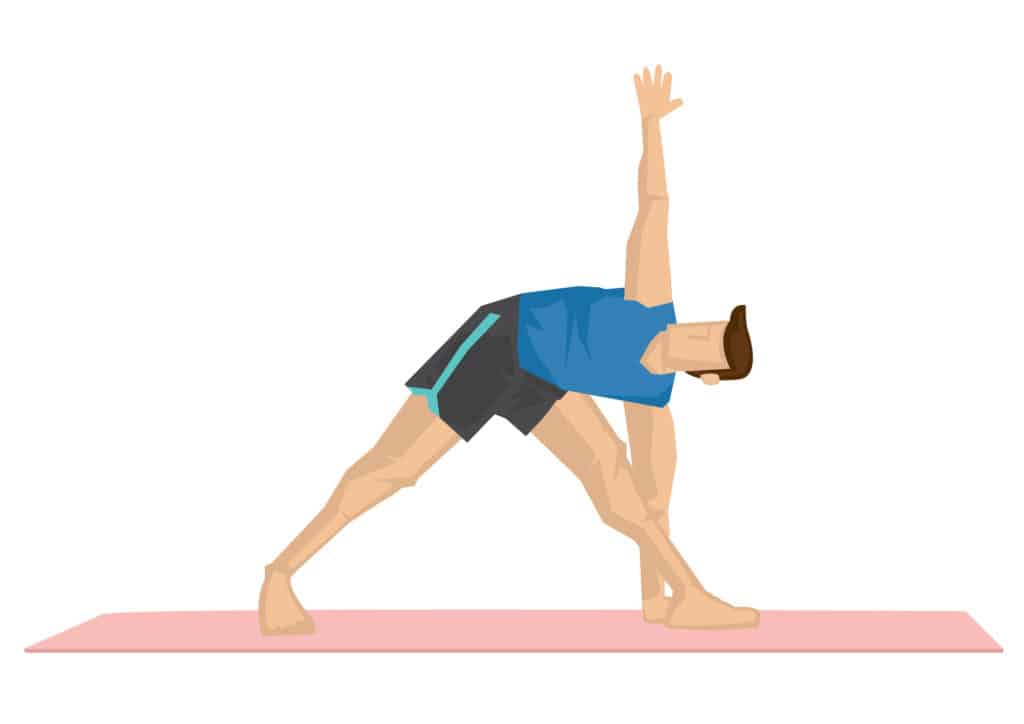More Blogs From Release Works
What Can Myofascial Release Therapy Do For My Emotional Trauma?
Yoga And Myofascial Release: Is There A Connection?
Are There Side Effects To Myofascial Release Therapy?
If you have chronic pain that has no apparent physical cause, and you’re looking for an alternative treatment to replace standard pain medication like opioids or suffer from treatment-resistant stress, anxiety, or depression, you may have already come across the term “Myofascial Release Therapy.”
So you know, Myofascial Release Therapy doesn’t involve any painful procedures, and it doesn’t leave you relying on medication.
Mental Health America reports “a strong connection between chronic pain and untreated mental health challenges.” At Release Works, we firmly believe that this connection is a two-way street – and the results we see with our clients speak for themselves. So much so that in recent years, Myofascial Release Therapy has become the therapy of choice for people with chronic pain and/or mental health conditions.
People often haven’t found relief with conventional medicine and/or traditional physical therapy, because their issues hide in their “tissues” and have been missed by the typical approaches. Not only are these ‘issues in the tissues’ being missed, they’re often treated in such a way that insures they are buried even more deeply.
This is a shame. Too many people are accepting a life of constant pain, simply because no one has helped them on a more thorough, whole person level.
When you better understand – and respect – the mind-body connection, you can help people find greatly improved results. This is why Myofascial Release Therapy can be super-helpful to treat the reciprocal link between chronic pain and mental health.
What Is Myofascial Release Therapy?

Myofascial Release Therapy is a hands-on form of therapy that, properly done, refuses to be distracted by the “spot” that hurts. We view each person as a whole being, not a particular set of symptoms.
Every chronic problem or pain happens because of, and is held in place with, the tensions and movement patterns of the surrounding environment. This includes the emotions and mental space someone happens to be stuck in.
Myofascial Release Therapy – again, properly done – treats the person as a whole and recognizes that the problems go way beyond the spot that hurts, or a particular “trigger point,” or a set of tight muscles, or even a herniated disc, pinched nerve, or anything else people like to blame.
So, emotions, anxiety, stress, etc., all these lead to a tighter environment as the muscles tighten in response to your stress and mood. If the emotions or mental state are persistent, they lead to persistent muscular stress and patterns of chronic pain.
What’s almost completely ignored though, is how restrictions and problems in the body lead to mental states of anxiety, depression, and pain. If you consider what goes on in a mind when something is stuck and not moving or working correctly… For example, if your pelvis is imbalanced, you will literally have a hard time finding support, and you subconsciously know it. That, of course, is very anxiety provoking.
Another example, our teacher, John F Barnes, PT likes to point out that if your tailbone (coccyx) is pulled and not situated well, it becomes an “anchor” to your spine and central nervous system. Not only might you have trouble sitting comfortably, but you might also find yourself lacking motivation as there is a constant “drag” on the deepest layer of your body.
This sort of problem is occurring in multiple ways throughout many, if not most, people’s bodies.
But what makes the John F Barnes Myofascial Release Approach so much more effective at addressing these issues and problems in the tissues of the body?
It’s because as we engage and work with your body, we are always aware that you are not a machine. Your body is not a set of tissues to be rubbed or stretched. You are not a symptom to be assigned an exercise. You are full of consciousness, and as much as our society likes to ignore it, consciousness matters.
Nearly every modality, treatment, and approach out there will blindly follow protocols and tell you exactly what you should be doing, regardless of the conscious mind that you are.
Instead, every time we put our hands on you, or interact in any way, we feel how your body responds and we follow that to offer the support against gravity, or elbow into the glutes, that you need.
Said differently, we are very good at helping you and your body find and reconnect with the natural healing you’ve been trying to do all along, whereas society tries to prescribe what you should need. This makes for a huge difference.
As we assist your body into restoring fluid mobility to your tissues as well as balance and proper alignment to your skeleton, your entire being will begin to relax. You will begin to feel good again in ways that are likely long forgotten.
We can talk about how releasing restrictions allows energizing blood and oxygen to flow freely around your body (and your brain) again, which is entirely true, but it goes deeper than that.
Myofascial Release Therapy, done the right way, removes the strait jacket of pressure that has been distorting your physical structure and keeping you stuck in painful mental states too. As a result, you begin to feel great physically AND mentally.
Remember, the fascia envelops and weaves through every organ, muscle, nerve, spinal cord, blood vessel, and lymph node of the human body in a completely continuous web of tissue. So, whenever there is a problem anywhere in this total-body web, there is a problem everywhere.
When you understand this, it’s easier to understand how, for example, the cause of your anxiety could be tight connective tissue at the back of your head. Vice versa, anxiety could cause tight muscles and headaches at the back of your head. Plus, each could be exacerbating the other in a painful and mentally exhausting vicious circle.
Though I don’t know why I’m using the word could. I’m convinced that it can’t not be happening exactly that way. I believe mind and body are nowhere near as separate as our society likes to think they are.
Understanding Fascial Restrictions

To understand how tight fascia can affect you on a mental, emotional, spiritual and physical level, it’s helpful to know what a “fascial restriction” is. A fascial restriction is any area of the fascia within the body that has experienced trauma or injury and has stiffened and thickened as a result.
In its normal healthy state, the fascia is highly flexible, fluid, and will glide easily. However, when mental stress or physical injury occurs, the fascia can become tight, inflexible, dehydrated, and essentially glued, inhibiting your natural movement.
When there is any restriction in the fascia anywhere in the body, it has an impact on how your body moves and functions. So, even if a single area of the fascia is restricted, its surrounding areas also get restricted and move out of alignment because everything connects.
For instance, tightness in the fascia can reduce the length of muscles, as people tend to be aware, but restrictions can also cause what should be distinct muscle groups to bind together into more or less dysfunctional blobs of muscle that stick instead of glide on each other.
Both of these situations lead to physical pain as a direct result of stress or tension on the joints or muscles. Restrictions and tightness in the fascia can also result in poor blood circulation. This reduced blood flow further affects how your nerves, brain, and other organs – such as the bowel (IBS), heart (palpitations), and vagus nerve (stress response) – function.
In a physical sense, if there is a restriction in the fascia around the hip joint, it can lead to an unnatural movement to compensate for the limitation and tautness in movement. Similarly if the fascia is restricted within the inner thigh.
This misalignment of the pelvis then distorts the head and spine position, leading to head-related problems such as headaches, migraines, or tinnitus.
So, you can probably see why conventional treatments that aim to “treat” migraines only mask the symptoms, they don’t find and treat the root cause.
Myofascial Release Therapy to release fascial restrictions can help:
- Reduce systemic inflammation – in the brain and the body
- Increase flexibility in the joints and muscles – to make you “feel” better
- Restore body alignment to its natural position – to calm the body’s stress response
- Improve blood circulation and associated organ (e.g., brain) functioning
- Restore normal walking gait and movement patterns
What Causes Restrictions in The Fascia (Connective Tissue)?

There are several reasons why restrictions form, including inflammation, injury, trauma, poor alignment, and old scar tissue.
Our hectic modern lifestyles, combined with increasingly sedentary personal and professional lives, lead to increased stress levels and restrictions in the body.
Yes, many of us engage in a lot of exercise and stretching to try and counteract the adverse effects of our current lifestyles.
Unfortunately, most of us still unwittingly hold our bodies in a chronic state of tension and high alert that, over time, leads the body to form restrictions in response.
It may not seem like it, but the body is trying to help – because if you permanently hold your shoulders up by your ears, the muscles become weak. So your body needs to support them, hence “solidifying” them up by your ears.
When restrictions like these are severe and reach a “tipping point,” they cause intense pain and discomfort and affect your quality of life.
It all adds up over the course of a lifetime, and the signals are there along the way. But our current habit in society is that we only seek treatment for these restrictions when they set in so severely that they affect our daily routines, impairing our movement and causing discomfort and pain.
Myofascial Release Therapy can undo years of built up restrictions and problems and the resulting pain, and regular Myofascial Release Therapy treatment prevents these restrictions from accumulating and causing problems in your body.
Is Myofascial Release Therapy Treatment Right For You?

Do you have severe chronic pain, anxiety, depression, or feel stressed and burned out all the time?
Have your symptoms failed to respond to traditional physical therapy, medication, or other forms of conventional treatment?
Yes, you’re the perfect candidate for Myofascial Release Therapy!
Why? Because the difference between Myofascial Release Therapists and allopathic medicine practitioners is that we evaluate the body (you) as a whole.
You are a whole person, not a pile of organs, bones, ligaments, tendons, and individual jigsaw puzzle pieces. We don’t just focus on one area of your body or mind in isolation. We connect ALL the dots.
So, if you have persistent and chronic pain, fatigue, fibromyalgia, or ongoing mental health problems, you’re likely to benefit immensely from Myofascial Release Therapy.
This unique form of therapy has proven to be effective in treating body-wide inflammation and in treating people who have experienced trauma or injury that has caused their body to develop a hypersensitive nervous system. Does that sound like you? We would love to help.
We know that a hypersensitive nervous system and the physical manifestation of stress and trauma, both minor and major, increase pain levels from fascial restrictions and associated muscle tension.
Myofascial Release Therapy helps remove the inflammation and heightened pain levels that a stressed-out nervous system can contribute to. In addition, the manual manipulation to release these restrictions helps release tension in your body.
As a result, it improves blood flow, decreases pain, and generally makes you feel much better.
Many patients who have experienced trauma-related stress report that Myofascial Release Therapy considerably helps relieve various symptoms. These include: headaches, migraines, tinnitus, and irritable bowel syndrome (IBS).
How We Can Help You With Mind AND Matter

“Your mind, emotions, and body are instruments, and the way you align and tune them determines how well you play life” – Yogi Bhajan.
At Release Works, we’re widely experienced in ending the “fight” between mind and body. Along with helping the tissues to just plain move the way they should, this restores a sense of calm and ease.
Your alarms can shut off, the pains can heal, and you can feel good again. All of this allows you to respond to your day to day much better equipped to deal with the inevitable things that happen.
In simple terms, we help you live a life of joyful existence – no longer slowed down – or worse still, stopped by the pain. Instead, you can look forward to feeling good and moving well, too – with nothing restricting how good you feel.
Are you ready to feel better? Don’t stay trapped in pain or frustrated and let down by traditional healthcare or physical therapy. We offer something better that can really help alleviate your symptoms.

